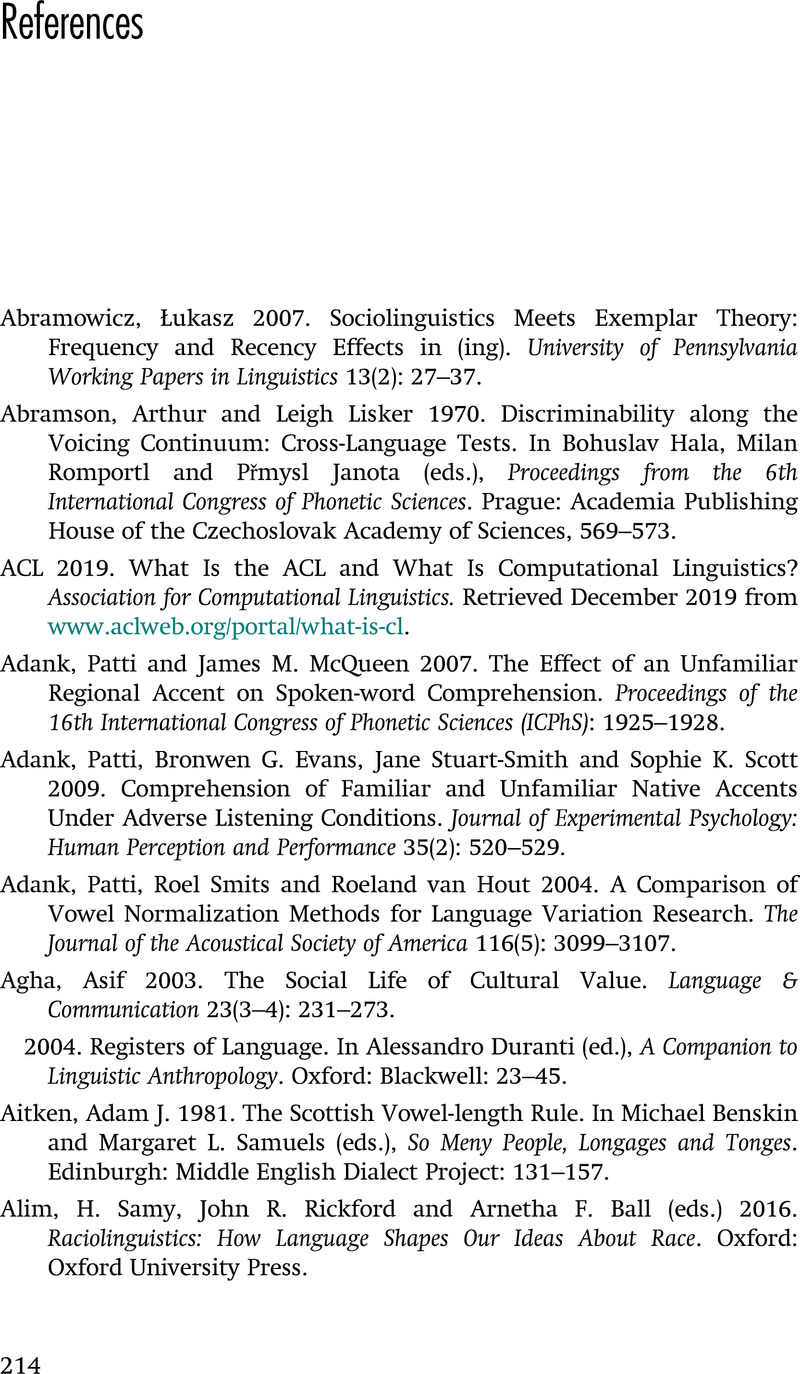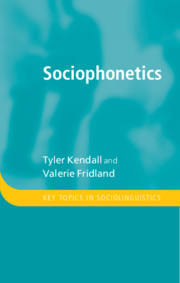Book contents
- Sociophonetics
- Key Topics in Sociolinguistics
- Sociophonetics
- Copyright page
- Contents
- Figures
- Preface
- Acknowledgments
- 1 Sociophonetics = Sociolinguistics + Phonetics
- 2 Sociophonetics and Its Methods
- 3 Sociophonetics and Its Methods
- 4 Sociophonetics and Regional Variation
- 5 Sociophonetics and Social Factors
- 6 Sociophonetics, Style and Identity
- 7 Sociophonetics and Sound Change
- 8 Sociophonetics and Its Methodological Future
- 9 In Closing
- References
- Index
- References
References
Published online by Cambridge University Press: 26 February 2021
- Sociophonetics
- Key Topics in Sociolinguistics
- Sociophonetics
- Copyright page
- Contents
- Figures
- Preface
- Acknowledgments
- 1 Sociophonetics = Sociolinguistics + Phonetics
- 2 Sociophonetics and Its Methods
- 3 Sociophonetics and Its Methods
- 4 Sociophonetics and Regional Variation
- 5 Sociophonetics and Social Factors
- 6 Sociophonetics, Style and Identity
- 7 Sociophonetics and Sound Change
- 8 Sociophonetics and Its Methodological Future
- 9 In Closing
- References
- Index
- References
Summary

- Type
- Chapter
- Information
- Sociophonetics , pp. 214 - 253Publisher: Cambridge University PressPrint publication year: 2021



